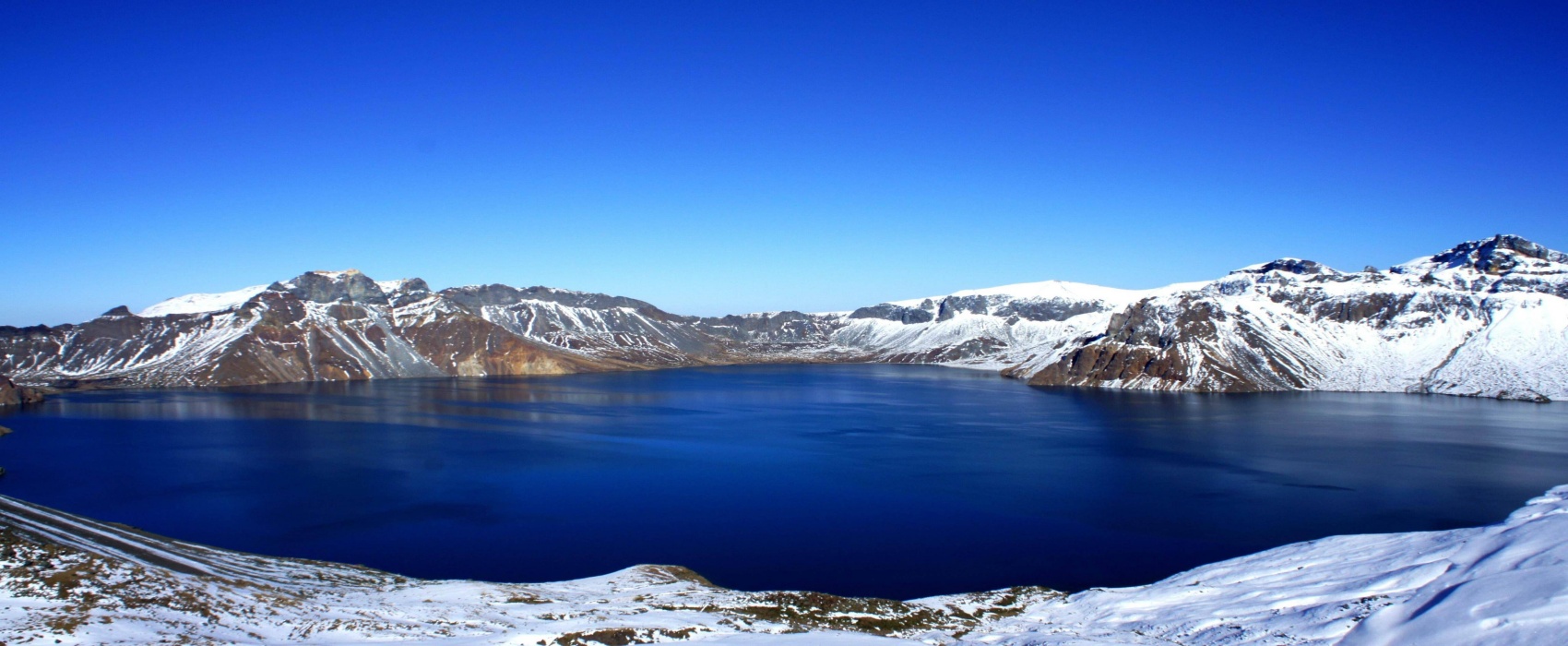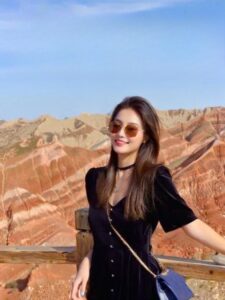Changbai Mountain is located in Antu County, Yanbian Korean Autonomous Prefecture, in northeastern China, bordering the Democratic People’s Republic of Korea to the south. A dormant volcano, Changbai Mountain boasts magnificent lakes, breathtaking hot springs, forests stretching to the horizon, and numerous rare flora and fauna, including Changbai Mountain ginseng. The scenery is magnificent in all seasons, but winter is particularly stunning. To reach Changbai Mountain, visitors can fly to Changbaishan Airport and then take a shuttle bus, taxi, or chartered vehicle to the scenic area.
1. Tianchi Lake
The most beautiful spot in China’s Changbai Mountains is undoubtedly Tianchi Lake. Formed in a volcanic crater, Tianchi Lake is the source of the Songhua, Tumen, and Yalu Rivers. Changbai Mountain is also the birthplace of the Manchu, Korean, and Han ethnic groups. Tianchi Lake sits at an altitude of 2,189 meters (about 7,182 feet) and has an average annual temperature of 7.3 degrees Celsius (45.14 degrees Fahrenheit). Shrouded in mist, Tianchi Lake resembles a piece of emerald green in the sky. Strolling around Tianchi Lake, you’ll discover a fascinating phenomenon: sunshine and rain often occur simultaneously. One minute it can be pouring rain, the next it can be sunny and warm. Sometimes, you can even see rain in the west while the sun shines brightly in the east. Beyond the magnificent scenery and breathtaking climate, many eyewitnesses claim there’s a monster in the lake! Some even take photos as evidence, but there’s currently no definitive evidence.
2. Changbai Waterfall
North of Tianchi Lake lies the outlet of the Chengcha River. After flowing gently for about 1,200 meters, the river suddenly becomes turbulent, cascading down a 68-meter-high cliff. This is the famous Changbai Waterfall, the world’s highest volcanic waterfall. From afar, the waterfall resembles a white ribbon suspended in mid-air. Approaching the falls, you can hear the tremendous roar and feel the coolness of the cascading water. Another way to view the waterfall is to climb Heifengkou, the main peak. While the strong winds in the Heifengkou col make both walking and climbing difficult, it offers the best vantage point for panoramic views of the waterfall. In addition to Changbai Waterfall, there are over a dozen smaller waterfalls on the mountain, which can only be viewed through the north slope entrance.
3. Changbai Hot Springs
Located less than two kilometers (1.24 miles) from Changbai Waterfall, Changbai Hot Springs is a popular hot spring. The rocks surrounding the hot springs are vibrantly colored due to their unique chemical composition. Most of the hot springs exceed 60°C (140°F), with temperatures reaching as high as 82°C (179.6°F). Hot spring eggs have become a local specialty. Visitors can soak in the hot springs, which are known to be effective for ailments such as arthritis, skin conditions, and fatigue.
4. Changbai Mountain Scenic Area Route Options
♥North Slope (Classic Route): Well-developed, with numerous attractions (including Tianchi Lake, waterfalls, and hot springs), suitable for first-time visitors.
♥West Slope (Hiking-Friendly): Requires a climb of 1,442 steps, offering expansive views and a stunning alpine garden in summer.
5. Other Changbai Mountain Attractions
The Underground Forest, the lowest point in Changbai Mountain, is renowned for its pristine forest landscape. In recent years, its towering ancient trees, boulders, exotic animals, and precipitous canyons have attracted numerous scientists, explorers, and photographers. The Twin Lakes and Natural History Museum on the north slope are also worth a visit. Furthermore, the newly developed Grand Canyon, Jinjiang Waterfall, King’s Lake, Tiger Back, and Ladder River on the west slope also attract numerous visitors. Visitors seeking a close-up view of the China-North Korea border and admiring the beautiful alpine flowers can climb Changbai Mountain from the south slope entrance.
6. Best Time to Visit Changbai Mountain: The best time to visit Changbai Mountain is September. During the peak season, from June to September, flowers bloom on the southern and western slopes. The cool weather makes it an ideal escape from the summer heat. However, July and August experience heavy rain, hindering visitors’ ability to clearly view Tianchi Lake. Snow usually begins to fall in October, and the best time to enjoy the snow and ski is from November to March. During this period, a trip to Changbai Mountain includes a visit to the Snow World. The snow begins to melt in April, but visitors can still see snow even in May.
7. Accommodation
Visitors can stay with Korean families and learn about local life, or camp in the forest, breathing in the fresh air and enjoying the fragrance of trees and flowers. Top-tier hotels are also available, such as the Crowne Plaza Hot Spring Resort, Changbaishan International Hotel, and the Olympic Village. Changbai Mountain in Jilin Province is also a rich source of wild mushrooms and traditional Chinese medicinal herbs, such as ginseng and deer antlers. These herbs can be purchased at local shops.
8. How to Get to Changbai Mountain from Changchun
The best option is to take the high-speed rail or bullet train to Changbai Mountain Station (Erdaobaihe Town), then transfer to a scenic bus or charter car to the Changbai Mountain North Slope Scenic Area. The journey takes approximately 4-5 hours and is convenient and cost-effective.
♥High-speed rail/bullet train (recommended)
Route: Changchun Station/Changchun West Station → Changbai Mountain Station (multiple trains daily, approximately 2.5 hours).
Transfer: Upon arrival, take a taxi or the scenic bus (approximately 30 minutes) directly to the North Slope Distribution Center.
♥Self-driving/charter car
Route: Changchun → Fuchang Expressway → Heda Expressway → Changbai Mountain North Scenic Area. The journey is approximately 400 kilometers and takes 5 hours.Note: Snow tires are required in winter, as speed limits may apply on some sections. Charter car fees are approximately 600-800 yuan per day.
♥Long-distance buses: Changchun Huanghe Road Bus Station offers direct buses to Erdaobaihe (approximately 6 hours, 130 yuan), making it a great choice for travelers on a budget.
9. How to Get to Changbai Mountain from Harbin
High-speed Rail/Electric Train
Route: Harbin Station/Harbin West Station → Changbai Mountain Station (approximately 4 hours).
Transfer: Upon arrival, take a taxi or scenic bus (approximately 30 minutes) directly to the North Slope Distribution Center.
Driving/Chartering a Vehicle
Route: Harbin → Jilin-Heilongjiang Expressway → National Highway 222 → Hunwu Expressway → Heda Expressway → Changbai Mountain North Scenic Area. The entire journey is approximately 530 kilometers and takes 6 hours.
Note: Snow tires are required in winter, as speed limits may apply on some sections.


